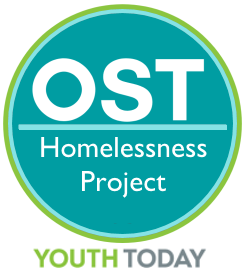 VLADIMIR BOROVIC/SHUTTERSTOCK
VLADIMIR BOROVIC/SHUTTERSTOCK
Series: Part 3 of 7
 Part 1: How Do We Make Youth Homelessness Effort Bipartisan?
Part 1: How Do We Make Youth Homelessness Effort Bipartisan?
Part 2: America’s Biases Marginalize Youth, Drive Them to Homelessness
Part 3: Collective Decision-making Can Neutralize Politics of Fear
Part 4: So, How Does This Collective Decision-making Work?
Part 5: Youth Homelessness Is a Symptom, Not a Cause
Part 6: To Work On Youth Homelessness, Brainstorming, Decision Analysis Strong Tools
Part 7: Youth Themselves Must Help Design Supports To Protect Them From Homelessness
Collective decision-making a success in the courts
Judge Teske first used collective decision-making beginning in 2003 to reform his local juvenile justice system, which has netted an 80% decline in juvenile arrests. Most striking, however, is how it was employed at the statewide level in the Georgia juvenile justice reform effort to net a 57% reduction in youth committed to state facilities, which resulted in the closure of three secured facilities.
Most striking is that juvenile arrests have declined 60% since 2008 and continued to fall following the enactment of the reforms.
The relevance of these outcomes is that they were influenced by reforms that are counterintuitive to the conservative majority in the Georgia legislature, and they were passed unanimously. This accomplishment was made possible using the collective decision-making approach that effectively depoliticized the policymaking process.

Judge Steven C. Teske
Criminal justice reform is the best example of this because law and order issues are often politicized, especially by conservatives relying on a deterrence model of crime and punishment that emphasizes the severity of punishment (longer sentences) compared to the certainty of sentencing, which studies show are more effective.
The history of crime and punishment in America is replete with politicizing rhetoric, mostly from conservatives, to influence the emotions of voters using emotional campaign slogans that are not supported by empirical evidence. An example is “Do the crime, do the time,” which calls for harsher punishments that deterrence studies continually show are ineffective and often counterproductive because they can make persons more criminogenic and violent.
We refer to this approach by conservatives, which relies on the emotions of the electorate to sway their opinion, as the “politics of fear.”

Naomi Smoot Evans
Consider that neurologists inform us that emotions have much more power to affect reason than reason does to affect emotions — particularly the emotion of fear. Consider the words of New York University neuroscientist Joseph LeDoux: “Connections from the emotional systems to the cognitive systems are stronger than connections from the cognitive systems to the emotional systems.”
Thus, it should be no wonder that fear can serve politicians. By presenting an alleged threat to people’s wellbeing, politicians can elicit a powerful emotional response that can override reason and prevent a critical assessment of policies. LeDoux’s findings seem to support various studies conducted by William Lyons and Stuart Scheingold that strongly point to why citizens are susceptible to political rhetoric on crime. They explain that:
“Politicians are attracted to punishment in part because their constituents are attracted to it. Politicians are, of course, always in search of campaign issues. Valence (largely symbolic and expressive) issues, like anti-communism, for example, are particularly attractive in that they unite sizable majorities. The only challenge with respect to valence issues is to present them in ways that work for you and against your opponent. Certainly, in presidential politics, street crime has frequently served as an effective valence issue, especially for conservative Republicans. Not only is there overwhelming agreement that street crime should be reduced, it has the added attraction of arousing strong emotions— something capable of gaining a firm grip on the public imagination.”
In Georgia, and in other states that have passed reforms with significant outcomes, the aforementioned outcomes resulted only because a collective decision-making approach was employed to prohibit the political rhetoric sensationalizing the emotions and to ensure that discussions were limited to objective, data-focused and empirically proven programs and practices, even if they looked softer on crime.
Within the context of trying to forward effective policies to eradicate youth homelessness, the same tactics we call the “politics of fear” are employed to arouse the passion of people against homeless youth by passing over their unfortunate and dire homeless circumstance and instead drawing upon the biases people have toward the individual traits of homeless youth — being LBGQT, justice-involved, youth of color or other traits.
Steven Teske is the chief judge of the Juvenile Court of Clayton County, Ga., was the national chair of the Coalition For Juvenile Justice and won the 2018 leadership prize from the Juvenile Law Center. He served two terms on the Federal Advisory Committee for Juvenile Justice, is a former member of the Board of Directors of the National Council of Juvenile and Family Court Judges and has testified before Congress numerous times on juvenile justice reform.
Naomi Smoot Evans is the executive director of the Coalition For Juvenile Justice, where she oversees the organization’s efforts to help states create brighter outcomes for youth. She co-chairs the Act 4 Juvenile Justice Coalition and was instrumental in passage of the 2018 Juvenile Justice Reform Act.



























